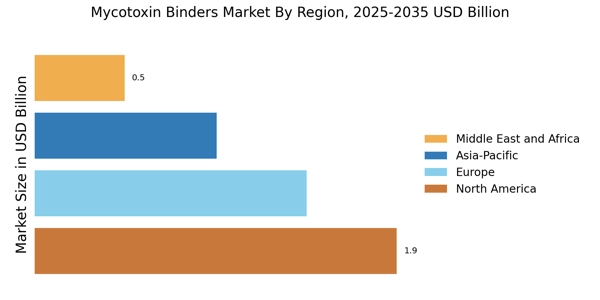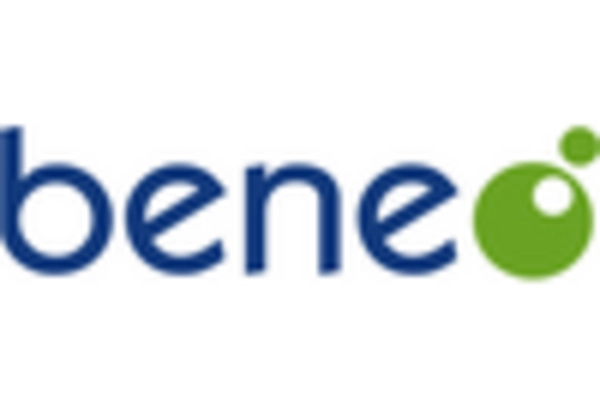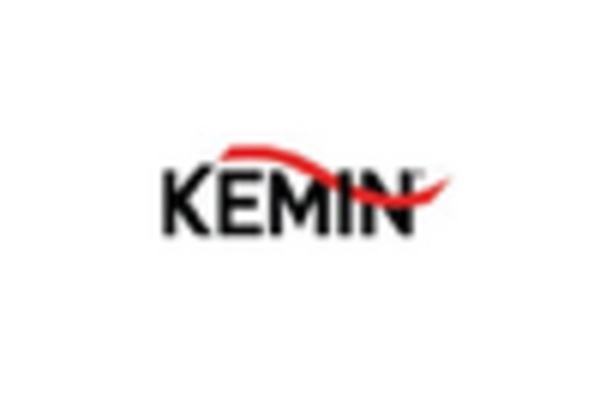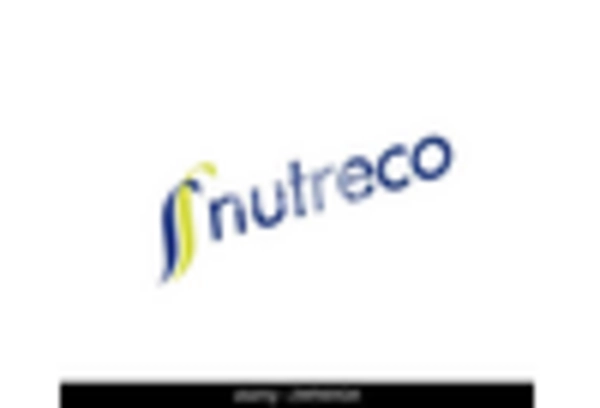The Mycotoxin Binders Market is currently characterized by a dynamic competitive landscape, driven by increasing awareness of food safety and the rising demand for animal feed quality. Key players such as BASF SE (DE), Cargill, Incorporated (US), and Kemin Industries, Inc. (US) are strategically positioned to leverage innovation and sustainability in their operations. BASF SE (DE) focuses on developing advanced mycotoxin binders that enhance feed safety, while Cargill, Incorporated (US) emphasizes regional expansion and partnerships to strengthen its market presence. Kemin Industries, Inc. (US) is also investing in digital transformation to optimize its supply chain and improve customer engagement, collectively shaping a competitive environment that prioritizes quality and reliability.
The market structure appears moderately fragmented, with several players vying for market share through localized manufacturing and supply chain optimization. This fragmentation allows for diverse product offerings, yet the influence of major companies remains significant. The collective strategies of these key players indicate a trend towards consolidation, as they seek to enhance operational efficiencies and respond to evolving consumer demands.
In August 2025, Cargill, Incorporated (US) announced a strategic partnership with a leading agricultural technology firm to develop innovative mycotoxin management solutions. This collaboration aims to integrate advanced analytics and AI into their product offerings, enhancing the efficacy of their binders. Such a move not only positions Cargill as a frontrunner in technological integration but also reflects a broader industry trend towards leveraging technology for improved product performance.
In September 2025, Kemin Industries, Inc. (US) launched a new line of mycotoxin binders specifically designed for the aquaculture sector. This product line is expected to address the unique challenges faced by aquaculture producers, thereby expanding Kemin's market reach. The introduction of specialized products indicates a strategic focus on niche markets, which may provide a competitive edge in an increasingly crowded marketplace.
In July 2025, BASF SE (DE) unveiled a sustainability initiative aimed at reducing the environmental impact of its mycotoxin binders. This initiative includes the use of renewable resources in production and a commitment to reducing carbon emissions. Such efforts not only align with global sustainability goals but also enhance BASF's brand reputation, potentially attracting environmentally conscious consumers and businesses.
As of October 2025, the Mycotoxin Binders Market is witnessing trends that emphasize digitalization, sustainability, and the integration of artificial intelligence. Strategic alliances are increasingly shaping the competitive landscape, allowing companies to pool resources and expertise. Moving forward, competitive differentiation is likely to evolve from traditional price-based competition to a focus on innovation, technological advancements, and supply chain reliability, as companies strive to meet the growing demands for quality and sustainability in the market.


















Leave a Comment